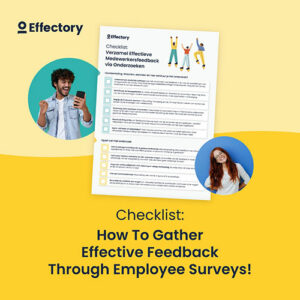Most organizations struggle with communication – whether top down, or ensuring employees at grassroot level have a voice. In this two part series I take a practical look at how to improve organizational communication – starting with how to ensure your boardroom messages make an impact.
Communication seems to be the hardest word: Part 1

The frustration in the boardroom is palpable: heavy sighs, hands are put in hair and the odd curse word is heard.
I’ve just told the board that their strategy is utterly confusing for their employees. They put hours, if not weeks, into it. They shouted it from the rooftops. Yet their employees still miss the bigger picture. This directly drags down their engagement and thus the organization’s performance.
What follows is a mixture of disbelief and annoyance: “How is this possible? I talk about nothing else whenever I visit our locations,” says one director, to which others quickly nod.
“Are they purposely trying not to understand?”, asks another. Middle management is often blamed as well: “Are they repeating the message like they’re supposed to?”
If I’m lucky, a hint of self-reflection emerges in the group discussion that follows. “Maybe we could have been clearer,” admits the bravest director. Or I get a dose of pragmatism: “Well, whatever the cause, this isn’t good enough and we need to do better.”
Most organizations I help struggle with ‘communication’ in one way or another. Given the breadth and depth of the term, however, it is often unclear what the problem really is. Poor communication is the easiest thing to hide behind. Great communication is equally as difficult to get right.
How to gather feedback from your employees
The definitive checklist for creating your employee engagement survey.
Download1. Utilize all four elements of communication:
Cover your bases with the what, the how, the ‘us’ and the ‘you’. Whether it’s between you and your partner or between you and your 80 000 employees, there are four distinct elements of communication you need to cover. Start with the What? and then How? Easy enough: your communication needs to include what you want to achieve and how you want to achieve it. If you’re a Simon Sinek supporter, you’ll want to add the Why?
At the very least, these how and what are necessary.
Below the metaphorical waterline is where it gets harder, however. When we talk about the ‘us’, it’s about understanding what’s happening between you and your audience. You might have an important title to your name, but if your people don’t trust or respect you, it doesn’t matter what you say – it will all be filtered through a prism of scepticism.
Finally, there’s the you – what happens inside yourself. How you truly feel about the message you’re spreading will ultimately help determine the effectiveness of your communication. If you are in fact super excited about the new strategy you helped formulate, use that excitement to get the troops excited as well. The opposite is true, as well: if you have a difficult message to convey, use your own emotions here, too: the messages with the most emotional impact on organizations are often conveyed in the least-emotional ways. Odd, no?
2. Empathize
In drafting the specifics of your message as a board member, take a second to realize how your position and access to information differs from that of your audience. You likely have all information streams at your disposal. Not just the figures, those are easy to share, but also the ideas and strategies that are floating around, the sentiment present in your board room – the things that aren’t written down.
The CEO of an organization in transformation I worked with once put it like this: as we are at the front of the train, we may already see the light on the other side of the tunnel while the rest of the train is still in the dark.
Download the Employee Experience Review
Discover how employees around the world are experiencing different parts of the employee journey and how this affects the employee experience.
Download3. Market your message
Your organization sells products and/or services and you’re likely to pay for a marketing department that does their utmost to market them in the most appealing way. Why not do the same for your internal messages? Approach your next message as a new product that needs to be launched, with a brand name, brochures, videos and interviews in a true media blitz to make sure everyone is aware of your message. Keep it short and snappy. Make it fun. Give it the kind of energy with which you want your people to respond.
One of the many books I’ve read about effective communication suggests people need to hear a message seven times before it really sticks. I honestly believe that it’s much more, especially in rapidly changing organizations. Give your message enough airtime.
4. Get with the times
Finally, dear director, don’t forget it’s 2018. Much like you no longer need to use snail-mail to tell your dearest you love him/her, you also no longer need to rely on your middle management to pass things on. Record vlogs, be visible on (internal) social media, use narrowcasting screens in your offices, organize live Q&A webinars – however you choose to do it, make sure to have an internal communication strategy going. I’m not saying newsletters don’t have a role to play anymore, but they should only be part of the package, not the package.
5. Regularly check whether your message has arrived
Imagine throwing a brick into a pond but closing your eyes and ears as soon as you’ve let the brick go. This is how too many companies ‘drop’ important messages into the organization – without checking to see what splash it made, who got wet and who didn’t. Thankfully, I know a company that can help you measure your progress in developing clear communication from the top down 😉
It doesn’t end there. More importantly perhaps, you need to focus on listening to your people. In the second part of this series, you can get the low down on bottom-up communication.
Book a free demo. See our solutions in action.
Effectory is Europe’s Leading provider of Employee Listening Solutions. Schedule a product demo and discover how to enhance your employees’ engagement.
Demo request

